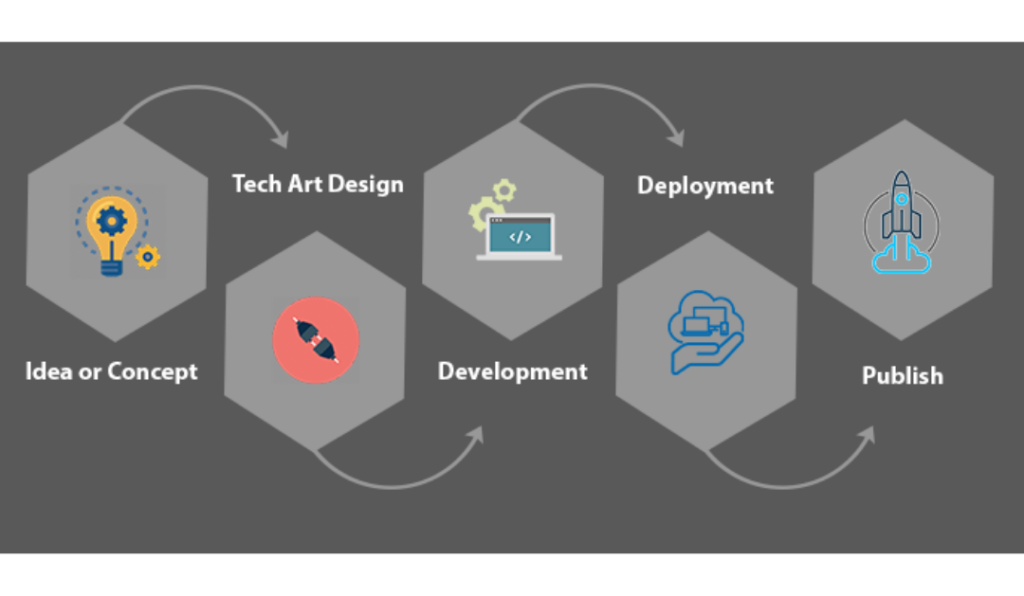In the rapidly changing landscape of technology, machine learning has emerged as a true game-changer, revolutionizing the way we interact with data and AI systems. As a subset of artificial intelligence, machine learning empowers computer programs to learn and adapt without explicit programming, unleashing a world of possibilities. In this article, we delve into the concept of machine learning development and explore its profound significance across various industries.
The Essence of Machine Learning
Machine learning operates by leveraging sophisticated algorithms to enable computers to learn from data and make informed decisions or predictions. This incredible process commences with feeding extensive datasets into the machine learning model, allowing it to discern patterns, relationships, and trends. As the model continues to receive feedback, it progressively refines its performance, becoming increasingly accurate over time.
The Three Pillars of Machine Learning
Within the realm of machine learning, three primary pillars shape the learning process:
Supervised Learning:
Supervised learning entails training the model on labeled data, where the desired output is known. Through this method, the algorithm learns to map input variables to the correct output, empowering it to make accurate predictions on unseen data.
Unsupervised Learning:
In contrast, unsupervised learning deals with unlabeled data, tasking the algorithm with identifying patterns and relationships without explicit guidance. This approach is highly valuable for data exploration and clustering tasks.
Reinforcement Learning:
Reinforcement learning takes a different path, focusing on training an agent to make decisions within a given environment to achieve specific objectives. The agent receives feedback in the form of rewards or penalties for its actions, learning from the consequences of its choices.
Unleashing the Power of Machine Learning
The widespread adoption of machine learning has ushered in a new era of transformation across diverse fields, fostering unprecedented benefits and opportunities:
Enhanced Decision Making:
By analyzing vast amounts of information, machine learning empowers businesses to make data-driven decisions. This invaluable insight facilitates better strategies and planning, leading to greater success and efficiency.
Personalization at its Finest:
In the digital age, personalization reigns supreme, and machine learning algorithms are the driving force behind recommendation systems. These systems suggest products, services, or content tailored to individual preferences, elevating user experiences to new heights.
The Era of Automation and Efficiency:
Machine learning streamlines processes and automates repetitive tasks, boosting efficiency and productivity in various sectors. This newfound efficiency liberates employees to focus on more complex and creative endeavors, nurturing innovation.
Security and Fraud Detection Reinvented:
Financial institutions and online platforms now harness machine learning to detect fraudulent activities and bolster security measures, safeguarding users and their sensitive information from malicious threats.
The Path to Successful Machine Learning Development
Developing a successful machine learning model requires a systematic approach, consisting of essential steps:
Problem Definition:
The initial step is to clearly define the problem and outline the objectives. Understanding what the model should achieve is paramount in crafting an effective solution.
Data Collection and Preprocessing:
Gathering relevant and high-quality data is essential for the model’s performance. Preprocessing the data to remove noise and inconsistencies ensures optimal results.
Feature Engineering:
Identifying the most pertinent features from the dataset significantly impacts the model’s accuracy, making feature engineering a vital aspect of development.
Model Selection:
Choosing the appropriate machine learning algorithm depends on the problem’s nature, available data, and desired outcomes.
Model Training and Evaluation:
The model is trained by feeding it with labeled data, and its performance is rigorously evaluated using various metrics to gauge its effectiveness.
Model Deployment:
Deploying the model in real-world environments requires careful planning to ensure seamless integration and optimal performance.
Leading Machine Learning Frameworks
To simplify the development process, machine learning frameworks provide developers with libraries and tools:
TensorFlow:
TensorFlow, an open-source framework developed by Google, is renowned for its extensive ecosystem and widespread usage in deep learning applications.
PyTorch:
PyTorch, another popular open-source machine learning library, is favored for its dynamic computation graph and user-friendly interface.
Scikit-learn:
Scikit-learn is a user-friendly library offering a plethora of machine learning algorithms and data preprocessing tools, making it accessible to all developers.
Machine Learning’s Impact across Industries
Machine learning’s far-reaching applications have unlocked innovation and progress in various industries:
Healthcare:
In the healthcare sector, machine learning plays a crucial role in medical image analysis, disease diagnosis, and personalized treatment planning.
Finance:
The finance industry relies on machine learning for fraud detection, risk assessment, and algorithmic trading, bolstering efficiency and security.
E-commerce:
E-commerce platforms leverage machine learning for recommendation systems, customer segmentation, and demand forecasting, optimizing user experiences.
Marketing:
Machine learning enhances marketing strategies by powering targeted advertising, customer profiling, and sentiment analysis, fostering strong customer engagement.
Challenges in Machine Learning Advancement
Despite its potential, machine learning faces several challenges that require careful consideration:
Data Quality and Quantity:
The accuracy of predictions heavily depends on high-quality data. Insufficient or biased datasets can hinder the model’s performance and efficacy.
Model Interpretability:
In critical applications like healthcare and finance, understanding how machine learning models reach conclusions is essential for decision-making and accountability.
Overfitting and Underfitting:
Balancing model complexity to avoid overfitting or underfitting is a delicate task that requires fine-tuning to ensure optimal performance.
Embracing a Promising Future of Machine Learning
As technology continues to advance, the future of machine learning is filled with thrilling possibilities:
Advancements in Deep Learning:
Deep learning, a subset of machine learning, continues to push boundaries, enabling even more sophisticated AI applications that seemed like science fiction just years ago.
The Rise of Edge AI:
The prevalence of Edge AI, where processing occurs on devices rather than the cloud, will revolutionize real-time capabilities, fostering efficiency and convenience.
Responsible AI at the Helm:
Addressing ethical concerns, the development of responsible AI will focus on transparency, fairness, and accountability, ensuring AI technology remains a force for good.
Machine learning development is revolutionizing industries, enabling data-driven decisions, and unlocking new opportunities. Embracing this technology will lead to innovative solutions, transforming the future.


